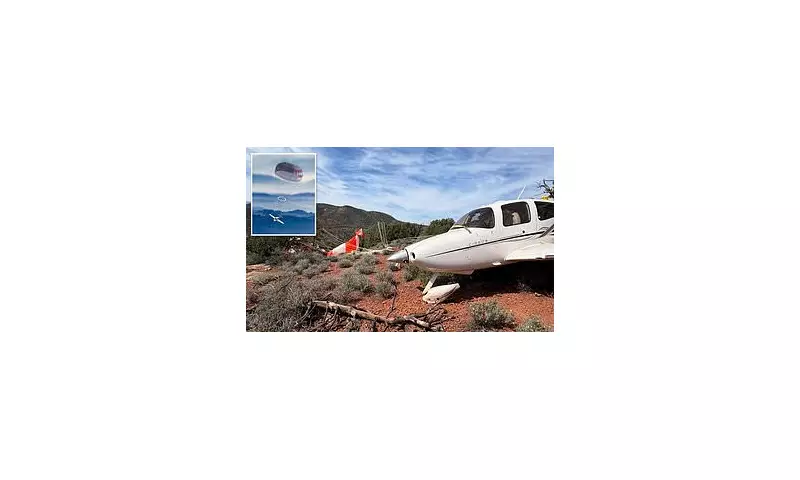
In what can only be described as a miraculous escape from certain disaster, a couple piloting a private aircraft survived a terrifying mid-air emergency over the harsh Arizona landscape by deploying an innovative safety feature that potentially saved their lives.
The Moment Crisis Struck
The routine flight turned to chaos when the single-engine plane experienced sudden and catastrophic mechanical failure while cruising at altitude. With the aircraft becoming uncontrollable and conventional recovery methods proving futile, the pilot faced every aviator's worst nightmare unfolding thousands of feet above the desert floor.
Deployment of Lifesaving Technology
Demonstrating remarkable presence of mind, the pilot activated the Cirrus Airframe Parachute System (CAPS), a revolutionary safety mechanism designed specifically for such emergencies. The system fired a rocket-deployed parachute from the aircraft's fuselage, which rapidly slowed the plane's descent and stabilized its fall.
Dramatic Desert Landing
The parachute-guided aircraft drifted downward, eventually making contact with the rugged terrain in a remote area of Arizona. While the impact caused significant damage to the plane, the controlled descent prevented catastrophic forces that typically prove fatal in such scenarios.
Emergency services responded swiftly to the scene, finding both occupants conscious and able to communicate despite their harrowing experience. Medical personnel conducted thorough evaluations, with early reports indicating surprisingly minor injuries considering the circumstances.
Aviation Safety Revolution
This incident highlights the growing importance of whole-airplane parachute systems in general aviation. Originally developed for Cirrus Aircraft, this technology has become a celebrated safety feature that has been credited with numerous saved lives since its introduction.
The successful deployment in Arizona adds to the growing list of documented cases where the CAPS system transformed potential tragedies into survival stories, reinforcing the value of continued innovation in aviation safety technology.
Aviation authorities have launched a full investigation into the mechanical failure that prompted the emergency, while the aviation community celebrates what many are calling a textbook example of safety systems functioning exactly as designed under extreme duress.





